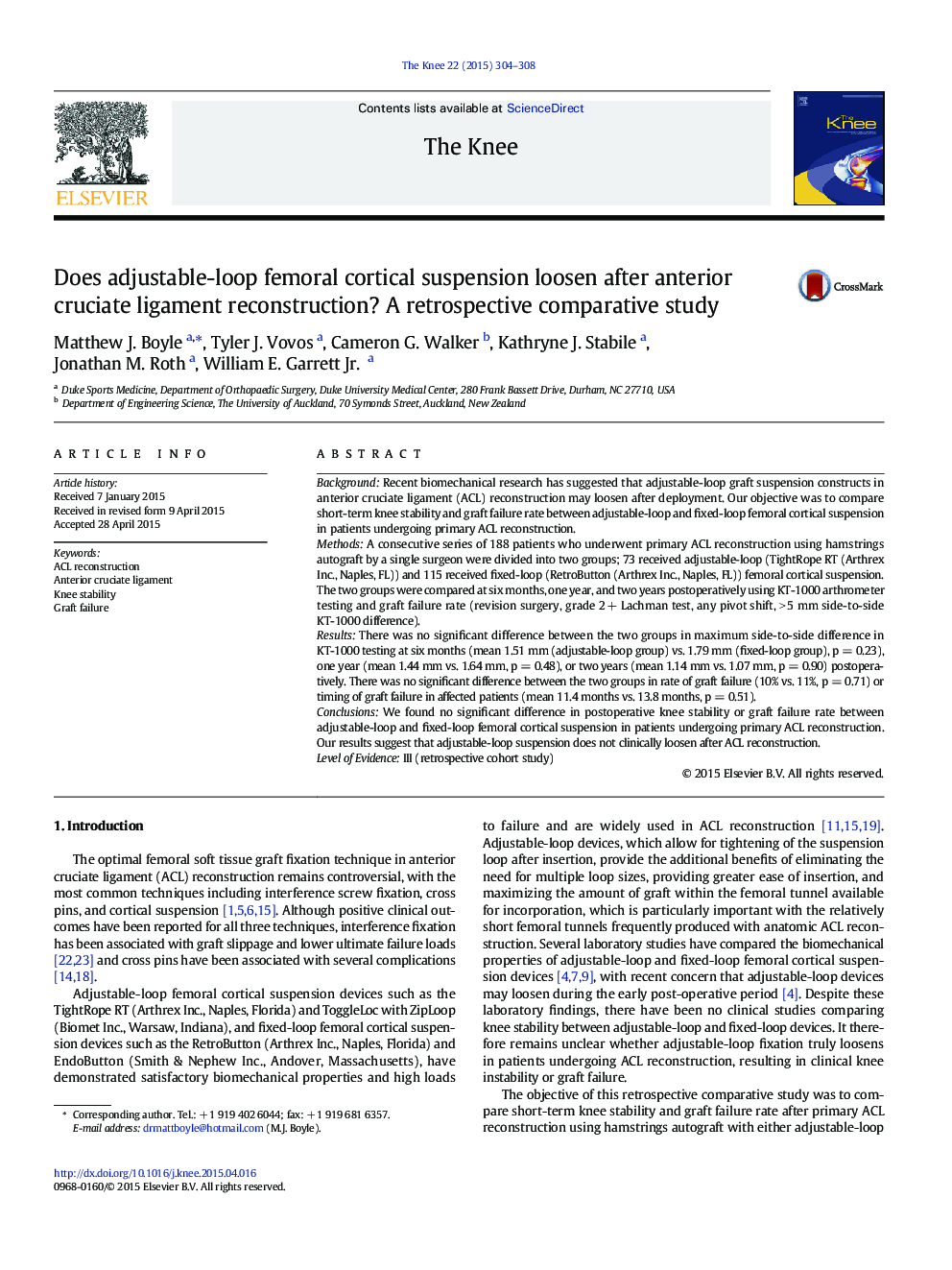| کد مقاله | کد نشریه | سال انتشار | مقاله انگلیسی | نسخه تمام متن |
|---|---|---|---|---|
| 4077253 | 1267209 | 2015 | 5 صفحه PDF | دانلود رایگان |
• Laboratory data suggests that adjustable-loop ACL graft suspension may loosen with time.
• We compared 188 ACL patients with adjustable-loop and fixed-loop femoral suspension.
• There was no difference in knee stability at six, 12 or 24 months between the groups.
• There was no between-groups difference in graft failure rate or graft failure timing.
• Adjustable-loop suspension does not clinically loosen after ACL reconstruction.
BackgroundRecent biomechanical research has suggested that adjustable-loop graft suspension constructs in anterior cruciate ligament (ACL) reconstruction may loosen after deployment. Our objective was to compare short-term knee stability and graft failure rate between adjustable-loop and fixed-loop femoral cortical suspension in patients undergoing primary ACL reconstruction.MethodsA consecutive series of 188 patients who underwent primary ACL reconstruction using hamstrings autograft by a single surgeon were divided into two groups; 73 received adjustable-loop (TightRope RT (Arthrex Inc., Naples, FL)) and 115 received fixed-loop (RetroButton (Arthrex Inc., Naples, FL)) femoral cortical suspension. The two groups were compared at six months, one year, and two years postoperatively using KT-1000 arthrometer testing and graft failure rate (revision surgery, grade 2 + Lachman test, any pivot shift, > 5 mm side-to-side KT-1000 difference).ResultsThere was no significant difference between the two groups in maximum side-to-side difference in KT-1000 testing at six months (mean 1.51 mm (adjustable-loop group) vs. 1.79 mm (fixed-loop group), p = 0.23), one year (mean 1.44 mm vs. 1.64 mm, p = 0.48), or two years (mean 1.14 mm vs. 1.07 mm, p = 0.90) postoperatively. There was no significant difference between the two groups in rate of graft failure (10% vs. 11%, p = 0.71) or timing of graft failure in affected patients (mean 11.4 months vs. 13.8 months, p = 0.51).ConclusionsWe found no significant difference in postoperative knee stability or graft failure rate between adjustable-loop and fixed-loop femoral cortical suspension in patients undergoing primary ACL reconstruction. Our results suggest that adjustable-loop suspension does not clinically loosen after ACL reconstruction.Level of EvidenceIII (retrospective cohort study)
Journal: The Knee - Volume 22, Issue 4, September 2015, Pages 304–308
